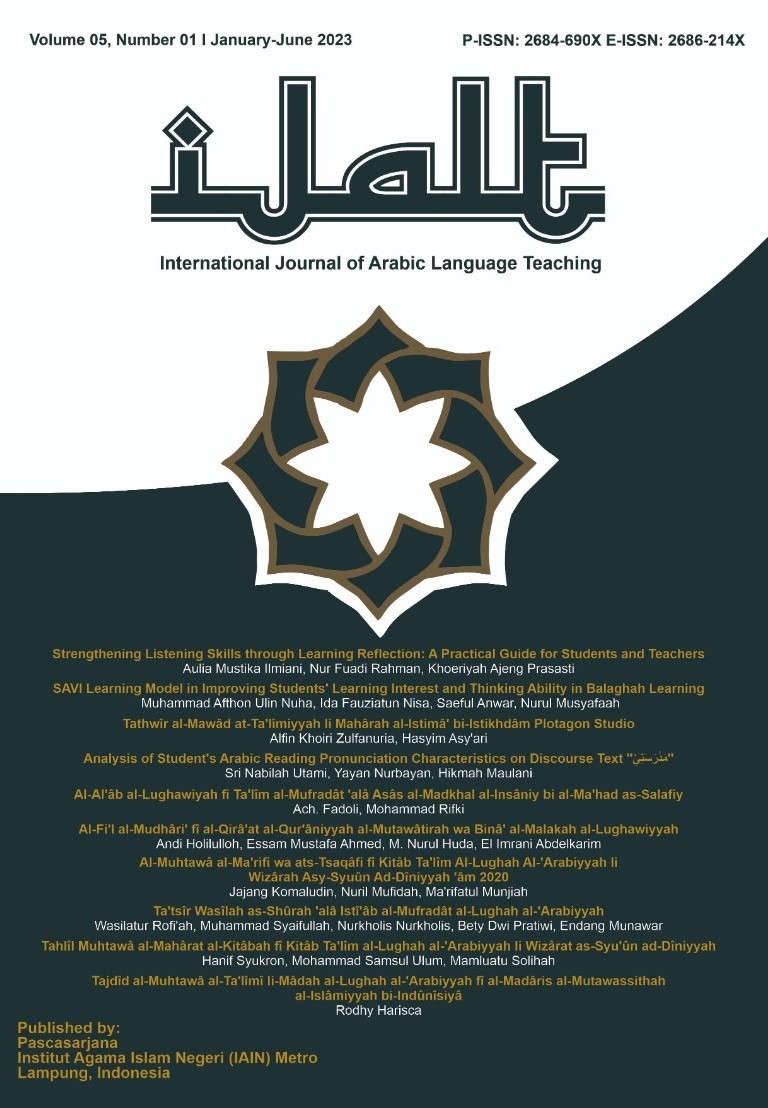Al-Fi’l al-Mudhâri’ fî al-Qirâ’at al-Qur’âniyyah al-Mutawâtirah wa Binâ’ al-Mahârah al-Lughawiyyah
(Dirâsah Nahwiyyah Sharfiyyah)
DOI:
https://doi.org/10.32332/ijalt.v5i01.6977Keywords:
Present Tense; Qur’anic Reading; Grammatical Study.Abstract
This study aims to analyze the present tense verb in the frequent Qur'anic reading and the construction of grammatical study. This study discusses the significant differences in visualism caused by differences in the customary forms that preceded them. The study also contributes to providing students with language fluency. The results of differences in the expression of the present tense verb for the difference in the form of the tool in this study include Arabic syntax of the present tense in the frequent Qur'anic readings with linking the state of the case with the meanings, difference of structure and so on. This study uses qualitative data with primary data sources from the original books such as Al-Qur'an, As-Sab'ah fil Qira'at, An-Nasyr fi al-Qira'at al-'Asyr and secondary data sources in the form of relevant books. The data collection methods are library research to collect some datas with Arabic linguistics approach. The results of the study are the difference in the syntax of the present tense in the frequent Qur’anic readings with linking the state of the case with the meanings, and the difference in the structure of the present tense in the frequent Qur’anic readings with an explanation of the impact of this difference in the noble verse that contribute to building the linguistic ability of the students.
Downloads
Published
Issue
Section
License
Copyright (c) 2023 International Journal of Arabic Language Teaching

This work is licensed under a Creative Commons Attribution-ShareAlike 4.0 International License.










